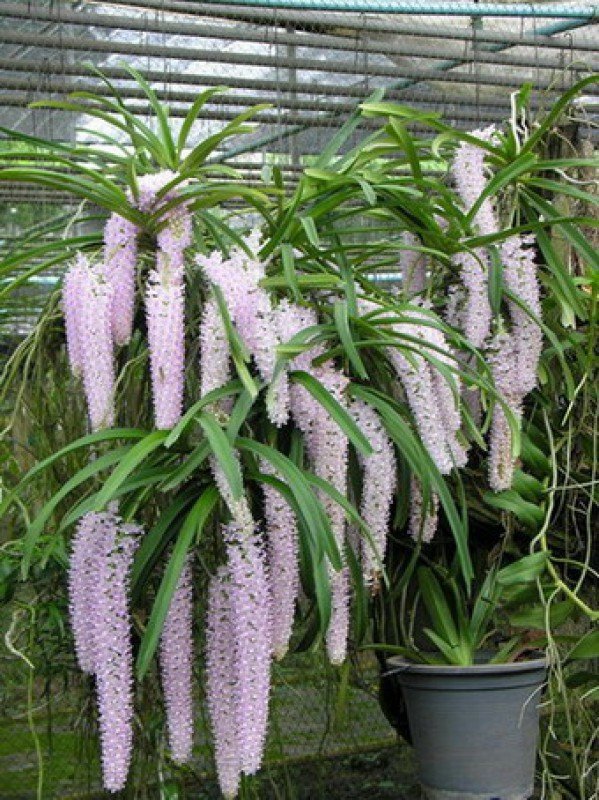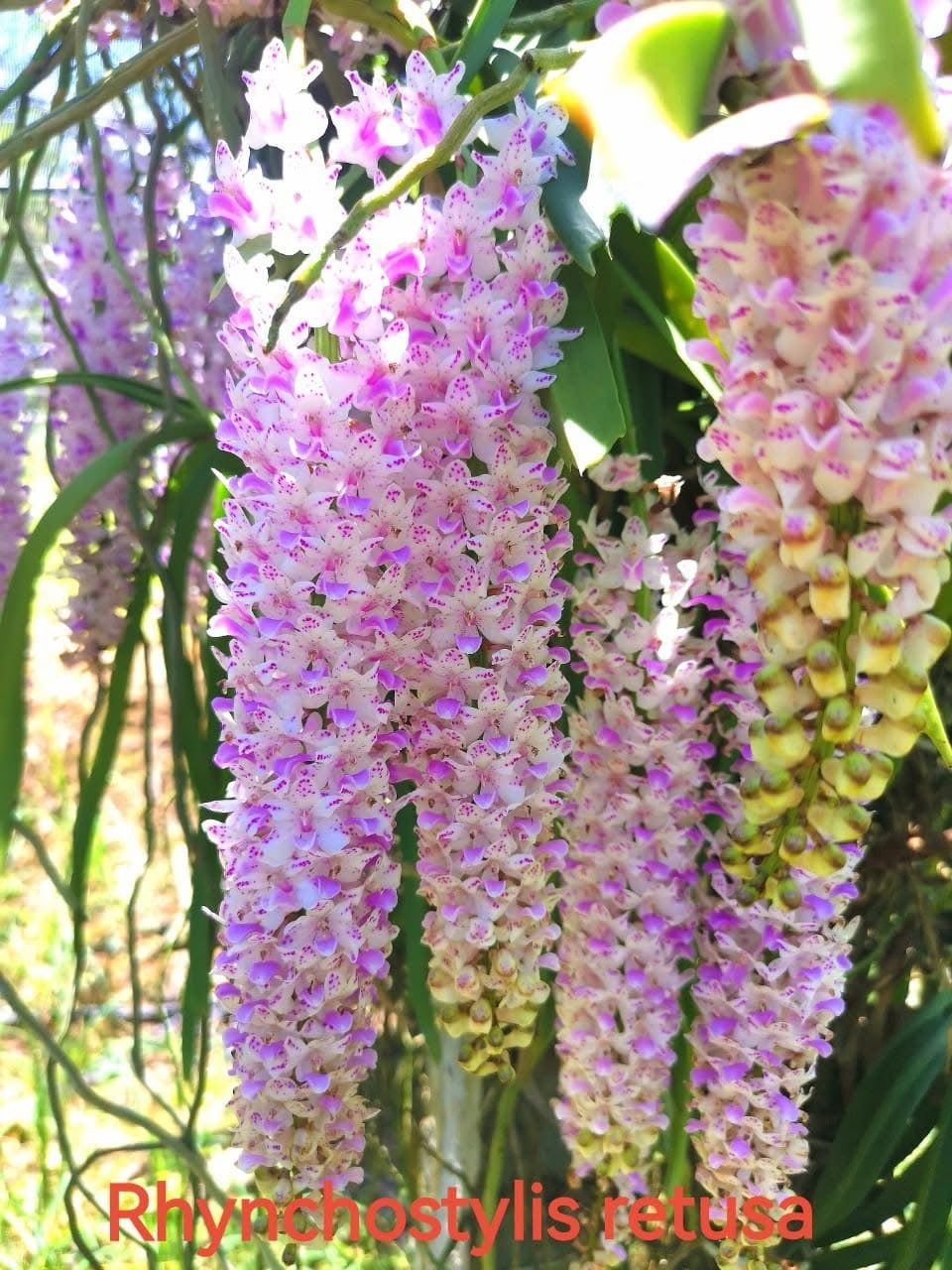Rhynchostylis are also called foxtail orchids. This is because of their long flower clusters, which are reminiscent of a fox's tail. A flower cluster can grow as long as 37 centimeters.
Origin
The Rhynchostylis retusa is the brother of the Rhynchostylis gigantea and is the state flower of Assam, India. It is an exotic flowering orchid (once a year, March-April), has a long raceme (cylindrical inflorescence, 40 to 45 cm) consisting of more than 100 white flowers with pink spots.
Symbol
For people in Assam, this flower marks the Bihu festival season, where girls put this flower in their hair during the Bihu dance. Colloquially, the flower is called "Kapou Phool. The harvest festival of Assam is a festival of dance, music and laughter. Among young people, Rhynchostylis retusa is considered a symbol of love and therefore it is the most sought-after flower that every female Bihu dancer wants to wear in her bun (Assamese-Khupa).
Care
Sunlight
This plant likes strong sunlight, but not direct. Diffuse light is more favorable. Direct afternoon light can burn the leaves. The plant likes strong air movement around the roots.
Temperature
It is a thermophilic plant. The plant may be kept slightly cooler, but then less water should be given. The temperature during the day is 21.5-33 degrees Celcius, and at night 18.5-25 degrees Celcius. In the spring, it may be slightly warmer, around 24-35 degrees Celcius. In winter, this plant also needs a warm temperature, around 21.5-33 degrees Celcius.
Humidity
This plant needs a humidity of about 80% most of the year, dropping to about 70-75% in winter and early spring. At low temperatures (21 degrees Celcius), humidity can be lowered to 40-70%.
This applies to plants in a pot culture. The humidity in substrate is higher. The above-ground part needs less water and the heart of the plant stays dry, which helps prevent rotting. The below-ground part needs more moisture and can absorb more water. The substrate holds the moisture more, while hanging plants dry out faster and therefore need higher humidity.
Watering
Rainfall in the natural environment varies from abundant to very abundant. Rainfall begins in late spring and lasts until autumn. Then the drying season, which lasts 3-4 months, begins fairly quickly in winter and early spring. Cultivated plants should be watered abundantly during the growing period, but at that time the air around the roots should be guaranteed to dry quickly after watering. In the case of plants growing in pots or baskets, the substrate used should not get wet. Use clean (preferably filtered) water.
In the air
These plants grow best in a way that allows the roots to hang loose, such as by attaching them to cork or hanging them in baskets without substrate around the roots.
Humidity when hanging in the air
Under these conditions, high humidity should be ensured and the plants should be watered at least once a day and even several times a day on hot days.
Substrate
These plants can also be grown in pots with very loose, quick-drying soil, allowing the roots to dry quickly after watering. Good results are obtained by using a mixture of equal parts of medium and large pieces of spruce bark and charcoal.
Repot
These plants respond unfavorably to repotting. But if the plants are growing in pots filled with a mixture of bark, they should be repotted every year, because possible decomposition of the bark can quickly lead to the death of the root system. The plant should be planted very shallow. Plants adapt faster and with less stress if they are fixed or repotted at the stage when new roots are just beginning to grow.
Nutrition and fertilization
During active growth, plants should be fertilized every week with orchid fertilizer.
Rest period
Rhynchostylis retusa needs much less water in winter. If humidity is high in winter, sporadic spraying of the plants between rare watering periods should provide sufficient moisture for proper development. If humidity is low, the plant should be watered more frequently. These plants should never be allowed to dry out completely. Until spring, fertilization should be reduced or eliminated altogether.




